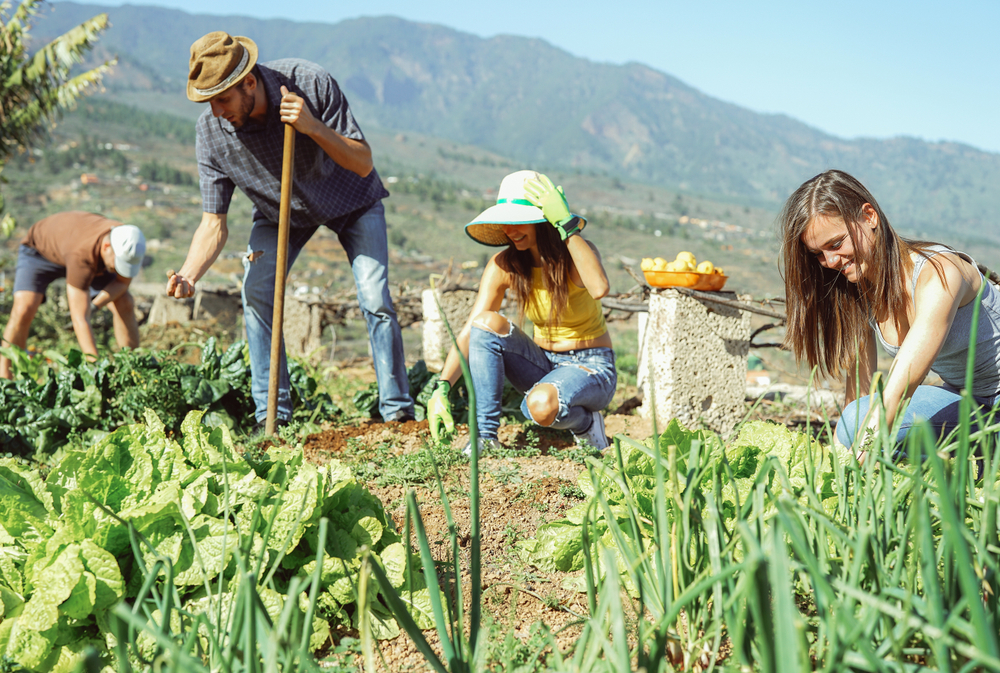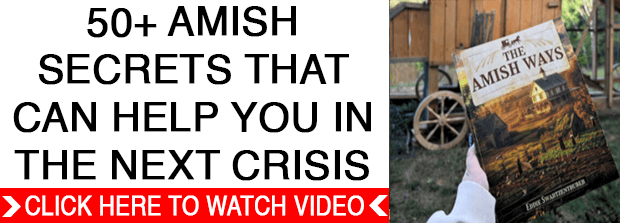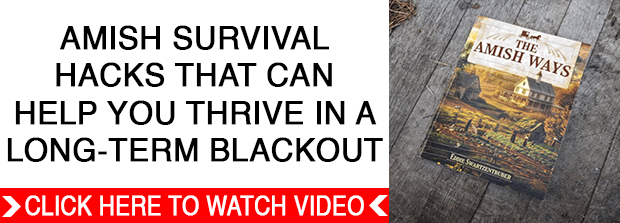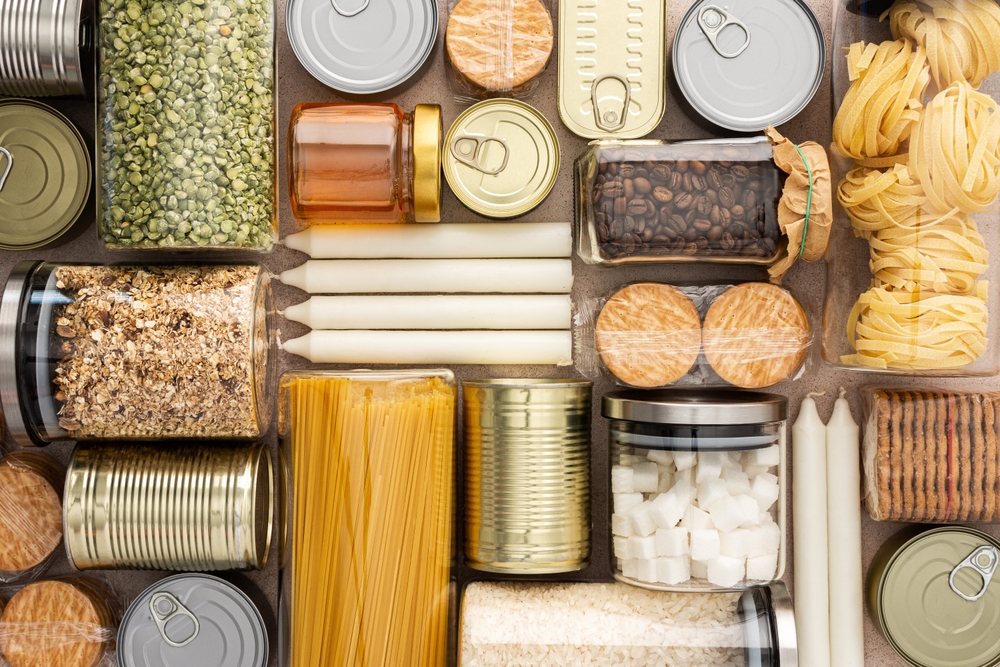You can have the best gear stacked high, water filters worth hundreds of dollars, and a bug-out bag packed with everything from freeze-dried meals to tactical knives, but if you think survival is just about what you carry on your back, you’re missing the bigger picture. Here’s the hard, cold truth: survival, at its core, is about people. It’s about community.
When the chips are down and the world around you starts crumbling, it’s your community that will decide if you live or not. It’s never about your skills or your stash because you can’t learn anything and you can’t stockpile everything. Only a few will manage to survive without people around them. For the rest, the community will determine whether they make it or not.
This is the raw truth and there’s no point in sugarcoating it because your survival depends heavily on the networks you’re part of. It lies in the connections you’ve managed to form over time and the trust you’ve built. Survival will be possible for most people out there only if they can rely on the bonds they formed.
Community is the weapon of survival
Think about the last time you were stressed, maybe overwhelmed by some crisis, big or small. Did you feel stronger when someone was there for you? Did it make you feel better when you shared your worries or simply weren’t alone? That’s not a coincidence. Humans are wired for connection and human interaction. We were built on it, and we still thrive on it.
It’s why, psychologically, having a community around you creates a buffer against despair and isolation. In a survival situation, that emotional resilience can be the thin line between giving up and pushing on. You are much stronger if you have someone backing you up.
And it’s not just about feelings where a community can help you. It has practical benefits like manpower, especially if it’s a big community, and it helps share knowledge which means you don’t have to learn every skill by trial and error. For example one neighbor might know how to purify water using various means, while another might have medical training beyond the basic first-aid course. Others are builders and mechanics, or perhaps skilled hunters.
Bring all those talents together and you’ve effectively multiplied your survival chances beyond your most optimistic scenario. It’s like having a Swiss Army knife made up of multiple experts rather than just one.
Even more, a group can watch each other’s backs. In a crisis, threats multiply: from environmental dangers to looters, to the unpredictability of human behavior. A community creates layers of defense that no lone individual can hope to match.
And when it comes to surviving and thriving, communities also share labor. When everyone pitches in, tasks that would crush one person become manageable. Whether it’s building shelter, growing food, or standing guard, a collective effort turns mountains into molehills.
The differences between traditional and digital communities — why old school still wins
Now, in this age of smartphones, social media, and instant messaging, it might seem tempting to think your “community” is just a network of online friends and followers. But here’s where reality bites and bites hard, digital communities, while convenient in these modern times, are notoriously fragile when disaster hits.
Have you ever noticed how misinformation spreads like wildfire on social media during emergencies? Or how quickly networks can go down, leaving people isolated despite hundreds of online “friends”?
When it hits the fan and everything becomes real, the bandwidth will disappear, your phone signal will drop, and suddenly that digital lifeline is no more. Even worse, online platforms can be weaponized to create confusion among users and divide (and conquer) the communities that desperately need unity.
On the other hand if we think of traditional, face-to-face communities, which were built on years of real-world interactions, shared histories, and mutual trust, we will see that they stand far stronger.
When you’ve shared your food with someone, helped them repair their truck or fix their roof, you’ve built trust and gratitude. No username or profile picture can help them pick the harvest. No digital friends can replace the real thing.
This isn’t to say that digital tools are useless, but relying solely on them is a gamble few survivalists should take seriously. Even something as simple as a shared look or a handshake communicates more trust than a thousand texts. It’s the difference between knowing someone will show up when the pieces start falling apart and hoping their Wi-Fi holds out.
Rural vs. Urban Communities
Of course, not all communities are built alike. Rural and urban environments flip the script faster than you can read it and offer different survival challenges and advantages. The environment is always shaping how the community plays out.
For example, in rural areas, communities tend to be smaller, tighter-knit, and more self-reliant. There’s often a culture of helping neighbors, whether it’s swapping firewood or pitching in for harvest season. People know each other by name; they share resources, information, and, critically, watch out for each other. This kind of interdependence is a huge survival asset.
However, rural life is not easy and can also bring isolation. That’s a big problem because when a crisis hits, help might be miles away and roads might be blocked. So while the bonds are strong, logistical challenges can hinder survival efforts. You might have the trust, but you will still struggle with the physical barriers Mother Nature brings, like snowstorms or flooding. Sometimes even sheer distance is too big a problem for some to overcome.
Urban communities, on the other hand, are a different beast. They’re often more fragmented since neighbors may barely know each other, and high population density can breed suspicion as much as solidarity. However, there’s also a unique strength in urban areas that rural communities lack. The diversity and specialization of multiple individuals will increase the chances of survival for some. You’ve got doctors, engineers, tradespeople, and countless other jobs and skillsets concentrated in a single place. The potential for forming specialized community groups is huge if you think of neighborhood watch teams or local first aid responders.
The challenge is overcoming the barriers of trust and apathy. Urban survival communities have to work harder at building genuine connections in the face of anonymity and the rat race. However, once those connections are forged, they can become incredibly resilient center points and start pulling resources and knowledge from a deep pool of talent.
When community works, and when it doesn’t
History has shown us over and over again the power of community and its absence. If we look at Hurricane Katrina in 2005, for example we will see how communities survived throughout the entire ordeal. In New Orleans, when the waters began to rise, community networks were stretched to the breaking point. In some neighborhoods, neighbors came together, sharing food, shelter, and protection. They formed rescue teams, sometimes long before the official help came. Those places saw better survival rates and less chaos when people worked together.
Contrast that with areas where social bonds were weaker, where fear and mistrust took root, and you’ll find stories of despair, looting, and avoidable loss. The difference was often simple: whether or not people trusted each other.
Or look at the COVID-19 pandemic. Communities that banded together, sharing information, resources, and emotional support, fared better mentally and sometimes even physically. Local groups sewing masks, delivering groceries to vulnerable neighbors, were often real lifelines. Places where neighbors ignored each other struggled more.
The takeaway? Community isn’t a luxury in survival, and it becomes a necessity. Without it, you’re alone in a storm, and storms don’t care how tough you think you are. The right kind of community can be the difference between a disaster turning into a tragedy or a manageable hardship.
What holds the community?
Here’s what people fail to realize about communities and what binds people together. Some may think that a community is a group of people coming together to fulfill a common goal. However there are some subtle points folks don’t see and we can rightfully say that a community is a living, breathing social organism. They rely on trust, cooperation, and leadership, but under extreme stress, those bonds can quickly be broken.
As we’ve seen over and over again, fear and scarcity can bring out the worst in people. Conflicts can erupt over resources or differing opinions on how to handle a crisis. Without established trust and clear leadership, communities can implode when they need to be strongest.
That’s why putting in the time to build relationships and a strong community ahead of time matters. It’s not just about knowing names but rather about understanding how people behave under pressure, learning how to mediate conflicts, and fostering cooperation before the real tests come.
Isolation or the lone wolf mindset, which is often pushed in our community by other, more experienced preppers, can indeed be seductive. But it’s a trap and the truth is that we humans aren’t meant to survive alone in the long term. Even the most hardened survivalist can’t carry the weight of the world alone. There’s strength in admitting we need each other, and power in practicing cooperation before disaster strikes.
How diversity can ruin a community
Here’s something that doesn’t get talked about enough: diversity in community. While I do agree that it can often be a strength, sometimes diversity can introduce real challenges when survival is on the line. It’s a bit of a double-edged sword. On one hand, a community made up of different backgrounds, skills, and perspectives brings a rich pool of resources and ideas. But on the other hand, those very differences can create friction, misunderstandings, or even outright division when stress and scarcity kick in.
People tend to gravitate toward others who think and act like them. It’s a natural human instinct and minds alike stick together when adversity comes knocking. That familiarity breeds trust faster than forced diversity ever could. When you throw in factors like racial bias, differing sexual preferences, political beliefs, or cultural divides. All these are real and are raw parts of life, which sometimes lead to fractures that can weaken the whole community.
In survival situations, where tension is already sky-high, the factors mentioned above can widen quickly. Arguments flare, suspicion grows, and cooperation stalls. Suddenly, instead of a united front, you might have splintered groups competing for resources or influence. This isn’t to say diverse communities can’t work because plenty do, especially when leaders actively foster inclusion and respect. But it takes effort and a foundation of shared values that transcend differences.
Ignoring the elephant in the room won’t make it go away. You should be building bridges before disaster hits rather than burning them. Even more important is that individuals within a community should recognize that sometimes, the easiest path to trust is through common ground, not just forced tolerance.
So yes, diversity is a double-edged sword in survival community building. Embrace it, but respect the hard work it takes to keep it from becoming a wedge. After all, survival depends on how well a group sticks together, not just how different they are.
How to build a community
Okay, so you’re sold on the idea that your community is your best survival asset. Now, how do you start to build your community?
It’s simple, really: invest time in the people around you. Find those like-minded individuals your community needs and keep them close.
That means reaching out to neighbors, attending local meetings, sharing skills, and building trust brick by brick. Don’t wait for the emergency to build forced connections because those won’t last. The best communities are built in peace, not panic.
And here’s a little secret: preparedness isn’t just about gear. Social preparedness is just as vital as any of the tools you owneven if it’s not as interesting as other topics being discussed. When you combine your kit with a solid community, you multiply your odds of survival exponentially.
So keep your radios charged, your supplies in reach and your guns loaded, but don’t forget to keep your relationships alive. Your community is the safety net beneath your survival plan, and without it, even the best gear can’t catch you when you fall.









































































Jim Phillips has videos on the preparedness value of community.
Preparedness Virtues of Community by Jim Phillips
Jim Phillips has been a friend and mentor for two decades. We’ve sadly lost him, yet his videos and teachings live on in the many he inspired and taught.
Subtitle: I’m moving out of population density and seeking to combine as a neighbor among like-minded for synergistic enhancement of preparedness.
I subscribe to these principles of the preparedness teachings of Jim Phillips.
If brevity is desired, start at:
5:25 “Self-reliant household interdependent within a self-reliant community …”
7:40 “A unified body of individuals that are bound together through agreed upon … common additude, character, interests, needs, fellowship, participation, work ethic, and commitment to the positive benefit of all …”
Ronald H Levine,
Sandy, Utah 84070-2633
https://youtu.be/83PlbVa35pM?si=GfMm8teBk8WFoNs0